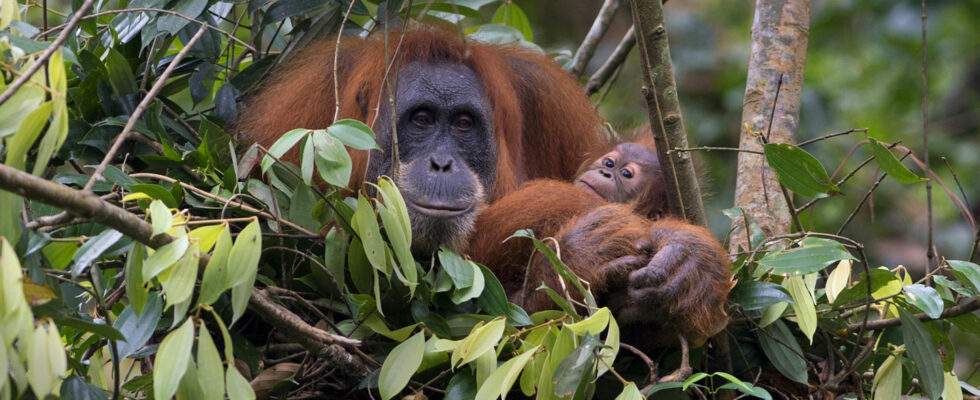At six months old, human infants are still working on sitting up by themselves. But baby orangutans at that age are already developing their engineering skills.
Orangutans build complex sleeping platforms as high as 20 meters in the tree canopy — the equivalent of four stories above the ground — every single evening. The nests are intricate and can include woven elements, pillows, blankets, padding and roofs to protect from rain.
But nest building isn’t instinctive to orangutans — it has to be learned through years of (sometimes hilarious) trial and error that start in infancy, researchers report in the May Animal Behaviour. The finding could be important for conserving populations of the critically endangered ape.
The treetops are “a dangerous place to live when you’re so big and heavy,” and a poorly made nest can spell disaster, says Andrea Permana, a primatologist at the University of Warwick in England.
To see how orangutans become expert canopy architects, Permana and her colleagues tracked the development of 27 young Sumatran orangutans at the Suaq Balimbing monitoring station in Sumatra, Indonesia, over 13 years. Those observations allowed the researchers to create detailed timeline of how nest building emerges.
By 6 months of age, baby orangutans take an active interest in nest building, even adding leaves and twigs to mom’s nest.
Young orangutans begin by building “day nests” — temporary platforms, often in fruit trees, for lounging while foraging. “Sometime before their first birthday, they’ve already started to try and bend branches around in a circle to try and make a nest foundation,” Permana says.
At this age, they’re not always strong enough to get the job done. “They’ll hang on [a branch] with their body weight to try and break it, really pulling, trying to bend it,” Permana says. “They think they’ve made a circle and they let go and it just pings open. You can see they’re kind of surprised, like ‘Oh! It’s not as easy as it looks.’”
Ages 3 to 4 are a frenzy of nest-building practice as the young orangutans perfect their day nests and try their hand at night nests. Permana recalls one young male named Fredy who, at about the age of 3, built and destroyed 21 nests in a single day. (They varied wildly in effort, quality and longevity.)
By about age 5, young orangutans can build a respectable place to spend the night, usually constructing a nest a couple of meters above their mother’s in the same tree. But even if they go to sleep solo, young orangutans always seem to wake up back in mom’s nest until they’re fully weaned at about 7 or 8 years old, Permana found (SN: 5/17/17).
After they’ve got the nest-building basics down, the comfort features — like roofs and blankets — appear to take still more years of practice to master, appearing more frequently in nests made by adults.
Permana’s study is “the first real, detailed investigation of the development of nest-building in apes,” says Elizabeth Lonsdorf, a primatologist at Emory University in Atlanta. It also underscores the important work done by forest schools, rehabilitation facilities designed to prepare orphaned orangutans for a life in the wild by teaching them key skills — like nest building.
Forest schools may need to add something a little extra to the curriculum; there’s an element of culture to the bedtime routine, Permana says. Each night, every orangutan in Suaq that includes a pillow in its nest makes a special pillow-making vocalization. It’s not the soulful lullaby you might expect from these mysterious, gentle giants — “it’s like a human blowing a raspberry.”
source site

